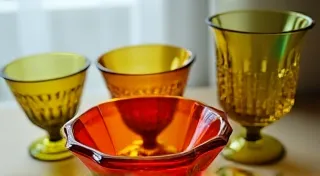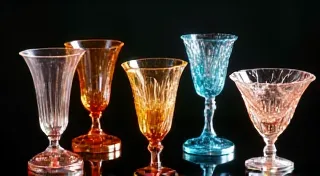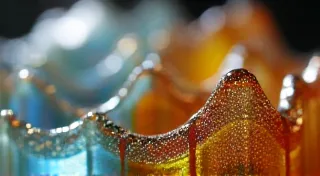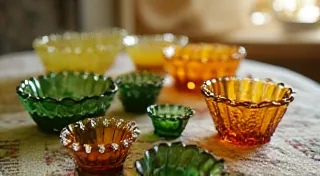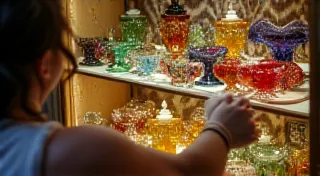Popular Carnival Glass Patterns: A Collector's Showcase
Welcome to the dazzling world of carnival glass! This iridescent glass, produced primarily from the 1900s to the 1930s, continues to captivate collectors with its vibrant colors and captivating patterns. Identifying these patterns is a crucial step in any glass collecting journey. This article showcases some of the most popular and recognizable carnival glass patterns, offering a glimpse into the artistry and history behind each design. Carnival glass’s beauty extends beyond its visual appeal; it's a journey through time and craftsmanship, and understanding the nuances of its creation and rarity is a key element in truly appreciating its value.
Understanding Carnival Glass Patterns
Before we dive into specific patterns, it's important to understand how carnival glass patterns are created. The iridescence is achieved through a specific manufacturing process involving a metallic surface that fogs up during firing. This process is unpredictable, meaning no two pieces are ever exactly alike. Patterns are created by pressing molten glass into molds, resulting in distinct shapes and surface decorations. The process itself is a fascinating blend of artistry and luck, contributing to the unique nature of each piece. If you’re new to the world of collecting and considering starting a collection, you might find our guide, Building a Carnival Glass Collection: A Step-by-Step Guide, incredibly helpful. The allure of collecting often starts with a question: "Where do I even begin?" This guide answers that, and many other introductory concerns.
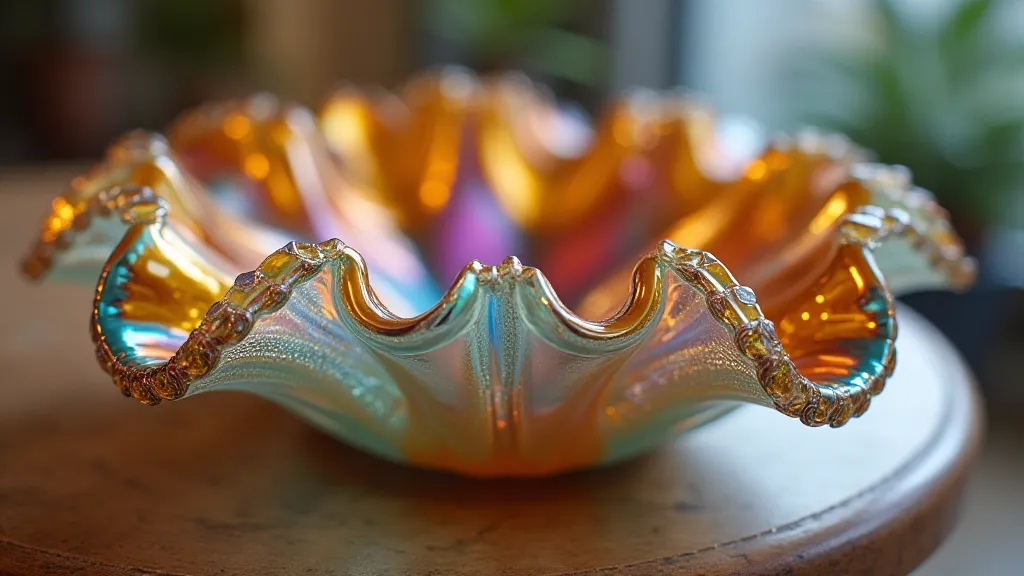
Iconic Patterns to Know
Finger Bowls
Perhaps the most recognizable carnival glass pattern, "finger bowls" are small, shallow bowls originally intended for use with finger foods. They are characterized by their undulating, wave-like surface, reminiscent of water ripples. Variations exist with different color combinations and iridescence levels. The fluid movement of the design often evokes feelings of tranquility and nostalgia, connecting collectors to a specific moment in history. They’re especially popular for displaying smaller collections or as standalone decorative pieces. Many collectors find the simplicity of finger bowls particularly satisfying, as they perfectly showcase the beauty of the iridescence.
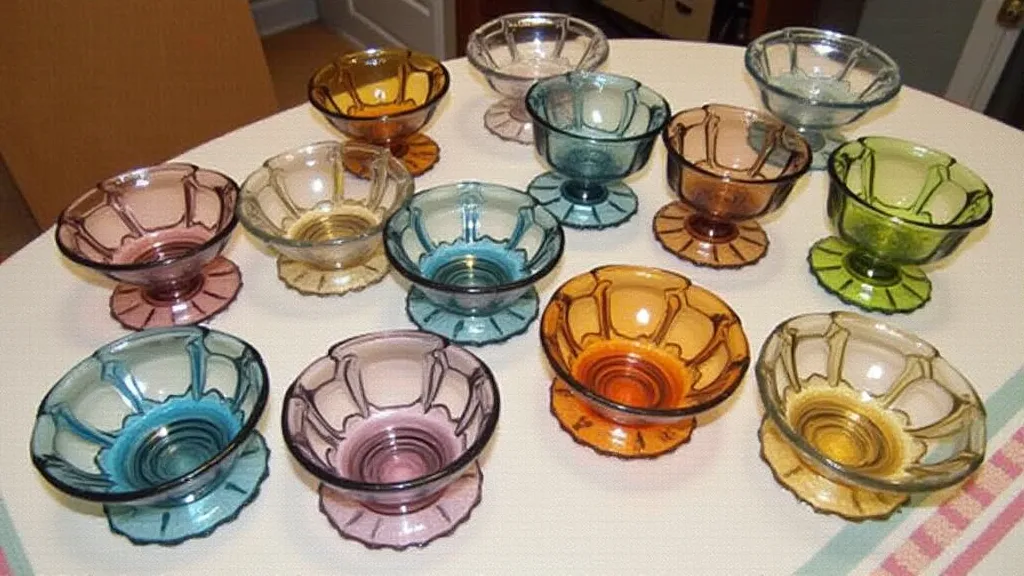
Slaters
Named after the Fenton Art Glass Company's foreman, Wilfred Slaters, these patterns are highly sought after. Slaters patterns are incredibly detailed, often featuring intricate floral or geometric designs. They are known for their depth and complexity, truly showcasing the skill of the glassmakers. The level of artistry involved in creating Slaters patterns is remarkable; each piece is a testament to the dedication of the glassmakers. The meticulous process of creating the molds and pressing the glass demonstrates a mastery of craft that’s rarely seen today. Understanding the history behind these patterns adds another layer of appreciation for collectors. The complexity of Slaters patterns also necessitates a deeper understanding of glassmaking techniques and the challenges faced by artisans of the era. For those interested in exploring the rarity and value of truly exceptional finds, you might be interested in learning about Rare and Valuable Carnival Glass Pieces: The Ultimate Finds. Knowing how to differentiate authentic Slaters from later reproductions is also a valuable skill for any serious collector.
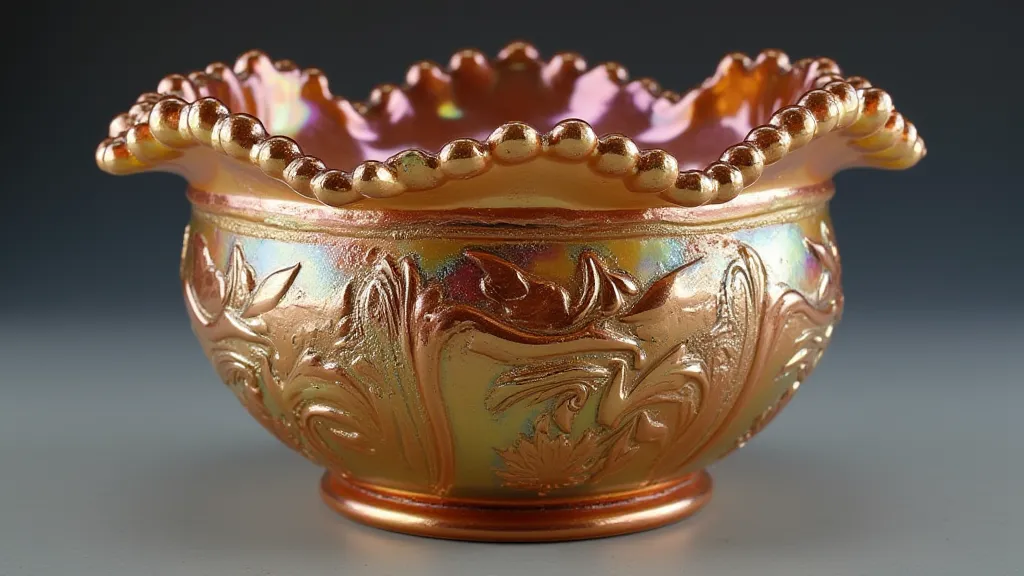
Thumbprint
The "Thumbprint" pattern is another popular choice, easily identified by the raised dots that cover the surface of the piece. These dots, resembling fingerprints (hence the name), catch the light beautifully, enhancing the iridescence. It’s often found on vases, bowls, and plates. The simple yet effective design allows the iridescence to truly shine, making it a favorite among collectors of all levels. The raised dots create a captivating play of light and shadow, adding visual interest and depth to the piece. This design's popularity stems from its versatility - it complements a wide range of colors and styles, making it a cornerstone of many collections.
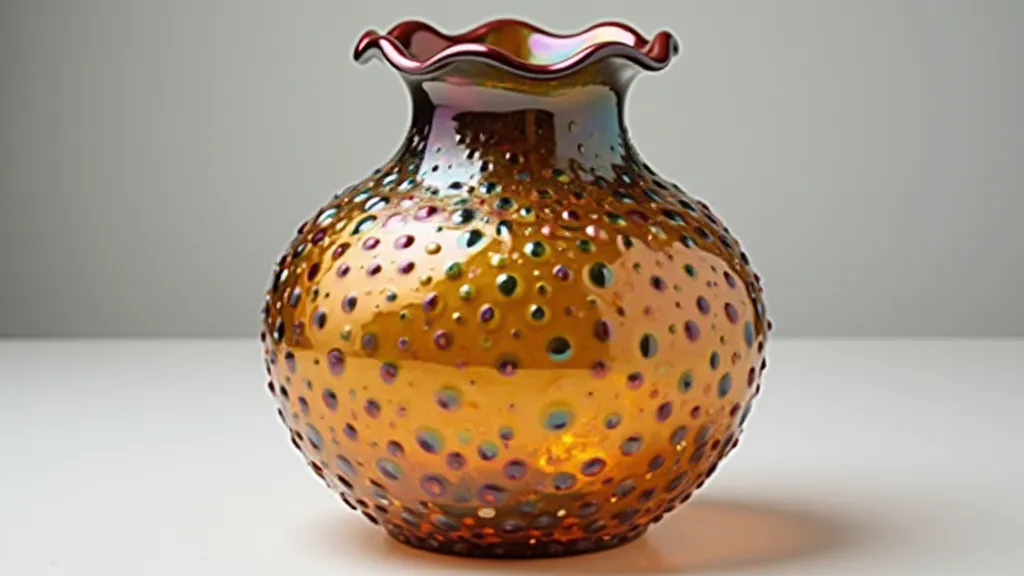
Grape and Moss
The "Grape and Moss" pattern is known for its unique textured surface. It depicts clusters of grapes nestled amongst leafy tendrils, creating a very realistic and tactile design. This pattern is quite striking and often found on vases and small bowls. The realistic depiction of grapes and moss showcases the skill of the glassmakers, who were able to capture the texture and form of nature in glass. The tactile nature of this pattern makes it a delight to handle, and the intricate details invite close inspection. The process of creating molds that could accurately depict such detail was a testament to the skill of the pattern makers. The subtle variations in color and texture within Grape and Moss pieces add to their individual charm and collectibility.
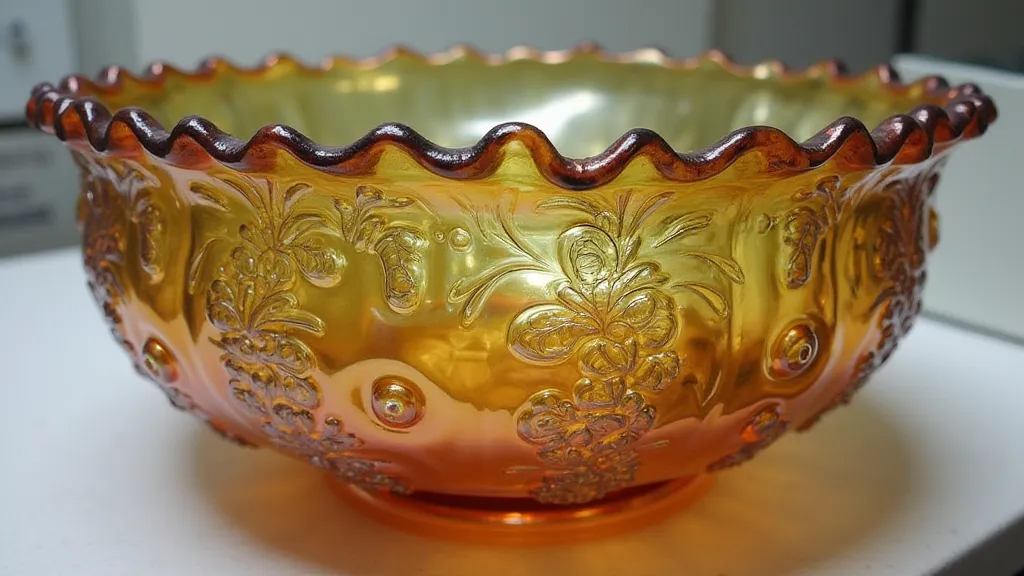
Combs & Fans
This pattern is easily distinguished by its repeating design of combs and fan shapes pressed into the glass. The complexity of this design makes it visually appealing, and it’s often found on vases and bowls. Variations exist with differing arrangements of the comb and fan motifs. The rhythmic repetition of the shapes creates a sense of movement and flow, drawing the eye across the surface of the glass. The intricate detailing speaks to the artistry of the glassmakers and their ability to create complex designs with simple tools. The geometric precision required for consistent reproduction of the Combs & Fans pattern highlights the importance of skilled craftsmanship.
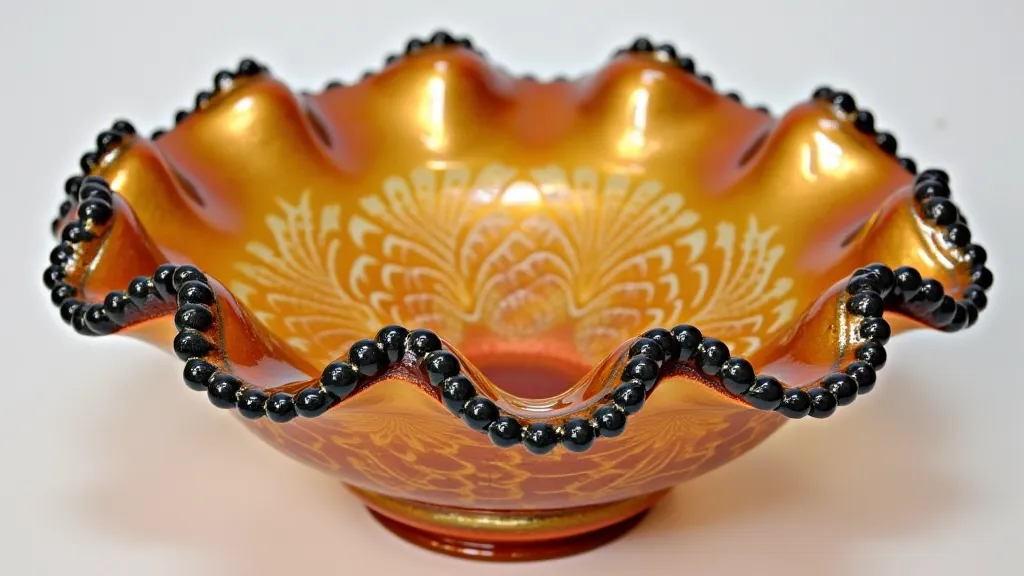
Beyond the Basics: Exploring Less Common Carnival Glass Types
While the patterns we's discussed are the most well-known, the world of carnival glass is vast and varied. There exist numerous other patterns, often regional or produced for short periods, that are highly sought after by dedicated collectors. The rarity of these patterns contributes to their value, making them a rewarding find for the patient and knowledgeable enthusiast. Many of these lesser-known patterns offer a fascinating glimpse into the regional preferences and experimental designs of the era. Furthermore, the colors themselves play a significant role in the desirability and value of a piece. Often overlooked, Beyond Peacock: Exploring Unusual and Rare Carnival Glass Colors & Patterns reveals the secrets behind the more elusive hues and designs. Discovering a rare variation, even within a common pattern, can significantly increase a piece's value and historical significance.
Collecting and Appreciating Carnival Glass
The beauty of carnival glass lies not only in its striking appearance but also in its history. Each piece represents a snapshot of a bygone era, a testament to the artistry and innovation of the glassmaking industry. As you continue your collecting journey, remember to appreciate the unique qualities of each piece, its color, its pattern, and its story. The process of collecting carnival glass is often as rewarding as the pieces themselves. The thrill of the hunt, the joy of discovery, and the camaraderie of fellow collectors all contribute to a rich and fulfilling hobby. Carnival glass collecting isn't just about acquiring beautiful objects; it's about connecting with a piece of history and sharing that appreciation with others.
Carnival glass’s iridescence isn’t just a visual phenomenon; it's a complex interplay of chemistry and physics. The metallic coating applied to the glass during production reacts with the heat of the furnace, creating the unique shimmering effect. Understanding this process can deepen your appreciation for the craftsmanship involved. Knowing a little about the materials and techniques used in production enhances the appreciation for the artistry involved.
Furthermore, the rarity of certain colors adds another layer of complexity to the collecting world. While peacock blue remains popular, many collectors seek out the less common hues, such as butter yellow or lavender. Each color has its own unique story and appeal. Speaking of which, you might want to learn more about the appeal of "Butter Yellow" with a deeper dive into A Deep Dive into 'Butter Yellow' Carnival Glass: Rarity and Appeal. The allure of these rare colors fuels a constant search for treasures within the carnival glass landscape.
The community surrounding carnival glass collecting is vibrant and welcoming. Online forums, collector’s clubs, and antique shows provide opportunities to connect with fellow enthusiasts, share knowledge, and admire each other’s collections. These connections add a social and educational dimension to the hobby. The shared passion for carnival glass creates a sense of community and camaraderie among collectors worldwide.
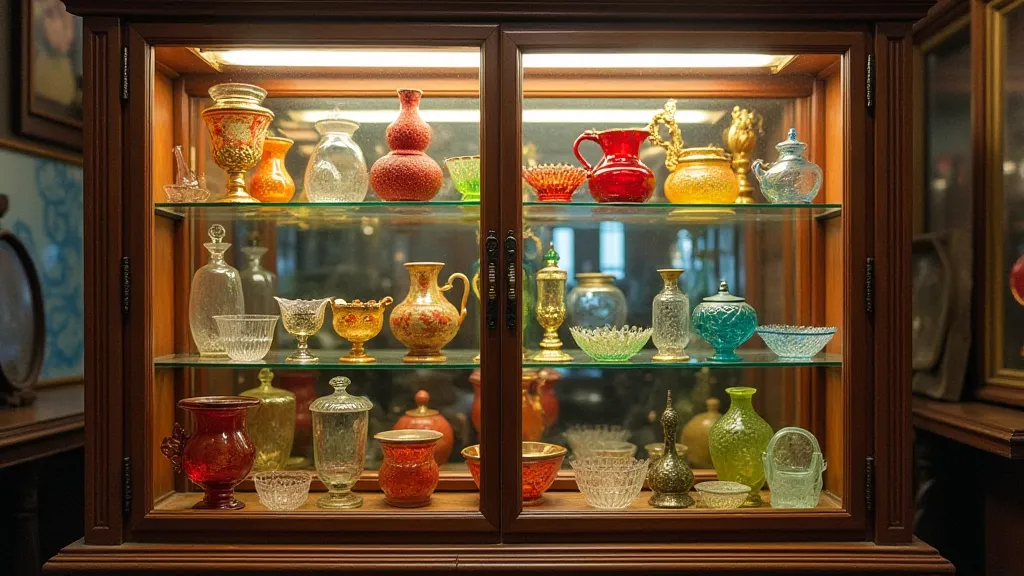
Happy collecting!
